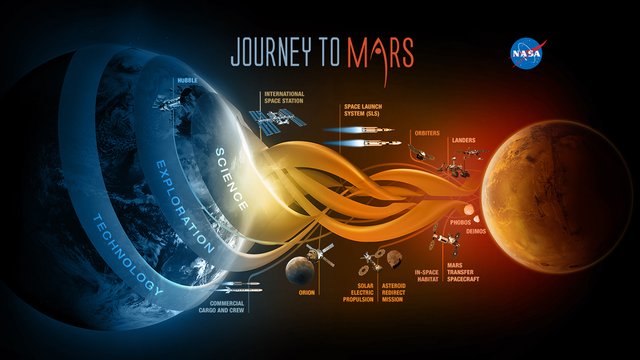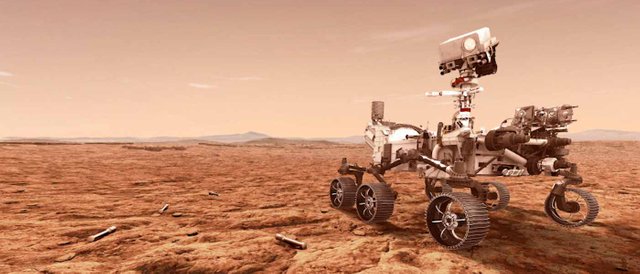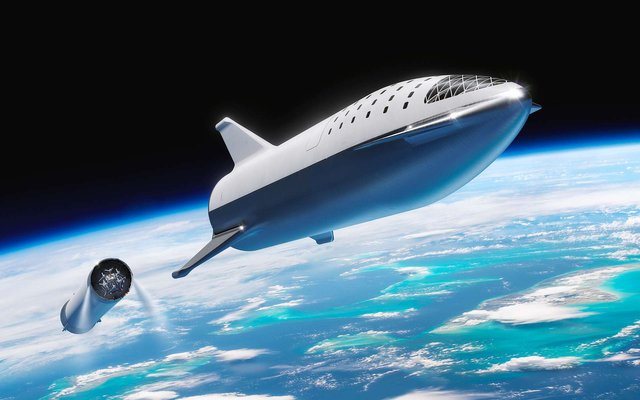How long does it take to get to Mars?/¿Cuánto se tarda en llegar a Marte?

Source
During this year the missions Al-Amal of the United Arab Emirates, Tianwen 1 of China and Perseverance of the United States arrived at Mars and all of them had left Earth at the end of June of last year, it is a mere rivalry for the space race or is there some special reason for everyone to launch their missions at the same time.
Durante este año las misiones Al-Amal de Emiratos Arabes Unidos, Tianwen 1 de China y Perseverance de Estados Unidos llegaron a Marte y todas ellas habían partido de la Tierra a finales de junio del pasado año, se trata de mera rivalidad por la carrera espacial o hay algún motivo especial para que todos lancen al mismo tiempo sus misiones.
But what is the distance that separates us from Mars? It depends because the planets are not still, they are moving permanently so the distance between two planets varies along their trajectories, in the case of Mars the average distance that separates us is an average of 225 million kilometers .
Pero ¿cuál es la distancia que nos separa de Marte? pues depende porque los planetas no se están quietos, se están moviendo permanentemente por lo que la distancia entre dos planetas varía a lo largo de sus trayectorias, en el caso de Marte la distancia media que nos separa es de una media de 225 millones de kilómetros.

Source
When the two planets are in their part of the orbit furthest from the Sun is when the two planets are farthest from each other, separated by about 400 million km but when Mars is in the part of their orbit closest to the sun (perihelion) and the Earth in its furthest position (aphelion) the planets are only about 55,000,000 km away.
Cuando los dos planetas se encuentran en su parte de la órbita mas alejada del Sol es cuando es cuando más alejados están los dos planetas entre sí separados por unos 400 millones de km pero cuando Marte se encuentra en la parte de su órbita mas cercana al sol (perihelio) y la Tierra en su posición mas lejana (afelio) los planetas se encuentran tan solo a unos 55.000.000 de km.
This coincidence in the orbits of the two planets only occurs every 26 months and that is why all the missions of the different countries all coincide at the same time and not only for a propaganda issue but also for saving time and fuel, let say for instance that both planets are 60 million km away one each other.
Esta coincidencia en las órbitas de los dos planetas solo se produce cada 26 meses y por eso todas las misiones de los distintos países coinciden todas a la vez y no solo por un tema propagandístico sino de ahorro de tiempo y combustible, pongamos por ejemplo que los planetas se encuentran a 60 millones de km.

Source
If we could travel at the speed of light we could go to Mars, have a few beers and come back for dinner because at 300,000 km / s it would take 22 minutes if the planets were in their furthest position and an average of 12.5 minutes or only 3 minutes if we take advantage of this window of time in which they are so close to each other.
Si pudiésemos viajar a la velocidad de la luz podríamos ir a Marte tomarnos unas cervezas y volver para la cena pues a 300.000 km/s tardaríamos 22 minutos si los planetas estuviesen en su posición más alejada y unos 12,5 minutos de promedio o solo 3 minutos si aprovechamos esta ventana de tiempo en que están tan cerca uno de otro.
But, no matter how advanced it may seem that we are in interplanetary travel, the highest speed reached by our ships does not reach 60,000 km / h and this is not the usual speed, at the average speed that our ships reach, the trip to Mars has an average duration of 162 days, of course in a non-stop trip.
Pero, por muy avanzados que parezca que estamos en los viajes interplanetarios, las mayor velocidad alcanzada por nuestras naves no llega a los 60.000 km/h y esta no es la velocidad usual, a la velocidad promedio que alcanzan nuestras naves el viaje a Marte tiene una duración promedio de 162 días, eso sí sin paradas.
Thanks for sharing this important information.
I knew something new from your blog. Thank you.
You are really doing the great job to share knowledge among us. Thank you.
Interesting topic, motivates to deepen about it. Thank you for everything. Greetings.
Yes.
this is good information.
Thank you for sharing with us.
Thanks for sharing. Interesting theme
I can't imagine spending 162 days in a constant moving machine on a trip to a void planet. Of course, there will more than one person on board, it still feels lonely to me. I guess that is the price they have to pay for the advancement of civilization.
If the trips were longer, the passengers would be in a state of hibernation.
Salvo que descubramos un campo que anule la inercia, cosa imposible con el conocimiento de la física actual, para llegar a la velocidad de la luz(si fuera posible) nos debería tardar mucho tiempo a una aceleración aceptable para los humanos dentro de la nave por lo que creo que el viaje sería algo más largo que 22 minutos, hay que acelerar y frenar....